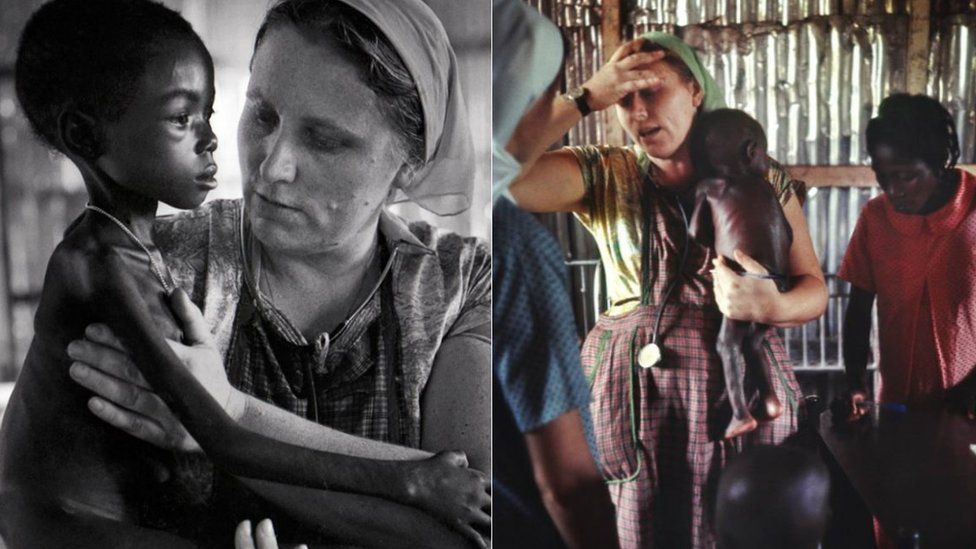Unseen photos of mercy mission doctor go on display
- Published

Many previously unseen photographs of a mercy-mission doctor who had to choose which famine victims could eat have gone on display.
Dr Anne Seymour was known for her charity work and ran the Accident & Emergency unit at the Ingham Infirmary in South Shields.
She also spent time in war-torn Nigeria in the 1960s saving famine victims.
In 1969 photojournalist Romano Cagnoni followed her for one day and the images are on display at South Shields Museum.
In the late 1960s in Biafra, Dr Seymour wrote in her diary about having to pick out of 400 starving victims a handful who would eat that day, because of dwindling supplies.
At the time she wrote in her diary: "There were about 400 people at the clinic and we had to choose 40 to get midday meals - being really firm we ended up with 96.
"Some of the mothers stood in the sun for four hours to try to get a child on the list. In England mothers ask about school places, but here it was 'was your child chosen to eat dinner?'"
Dr Seymour arrived in South Shields in 1976 to work as a consultant at the Ingham Infirmary and rapidly gained a reputation because she was one of the only members of staff who could perform microsurgery.
Dominique Bell, assistant keeper at the museum, said: "Anne had a somewhat fearsome reputation.
"Having witnessed children starving and having operated on people suffering terrible injuries during the Nigerian Civil War, Anne could be blunt and dismissive of Ingham patients' concerns if she felt they were minor by comparison.
"But she is well-remembered and respected - I had contact from a man who remembers her sewing his finger back on when he was 11, more than 50 years ago."
In another extract from her diary, written while helping in Biafra Hospital, she said: "Most of the under sevens could be weighed on the baby scales which weighed up to 28 pounds and the average weight of a nursing mother was five stones and two pounds."
Italian-born, Romano Cagnoni, who died earlier this year, was well known for documenting war and famine in Vietnam and Nigeria.
Dr Seymour died in 2016 at the age of 80, shortly after receiving a royal honour for her services to asylum seekers and refugees in the borough.
The exhibition Anne Seymour: Doctor, Missionary, Refuge is at South Shields Museum and Art Gallery until 15 September.